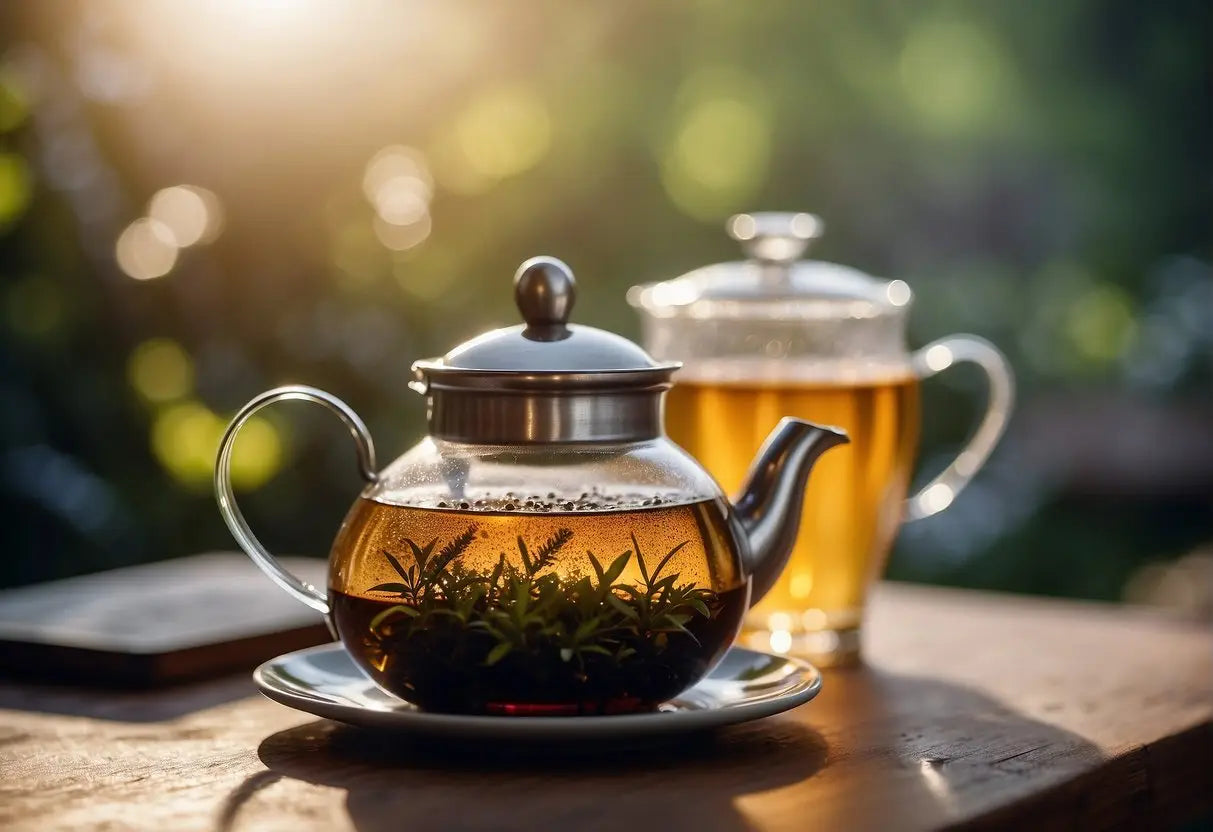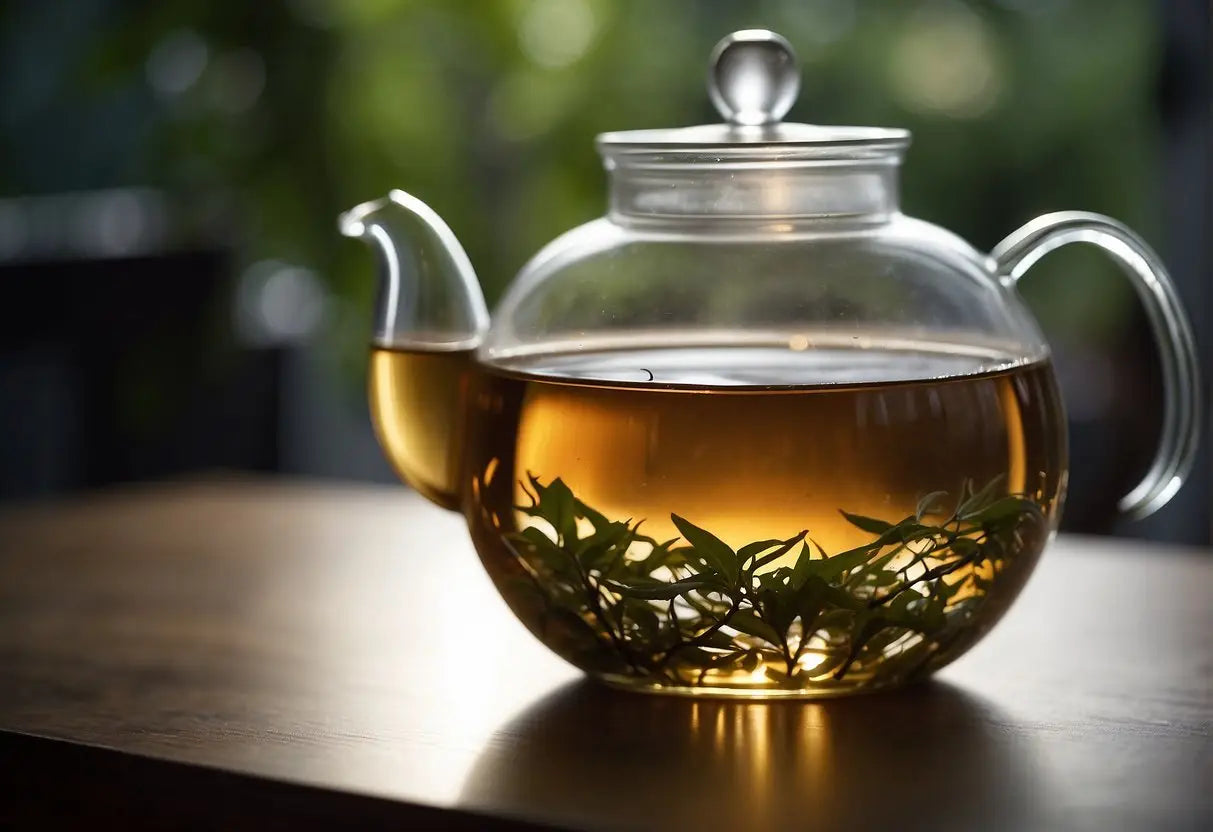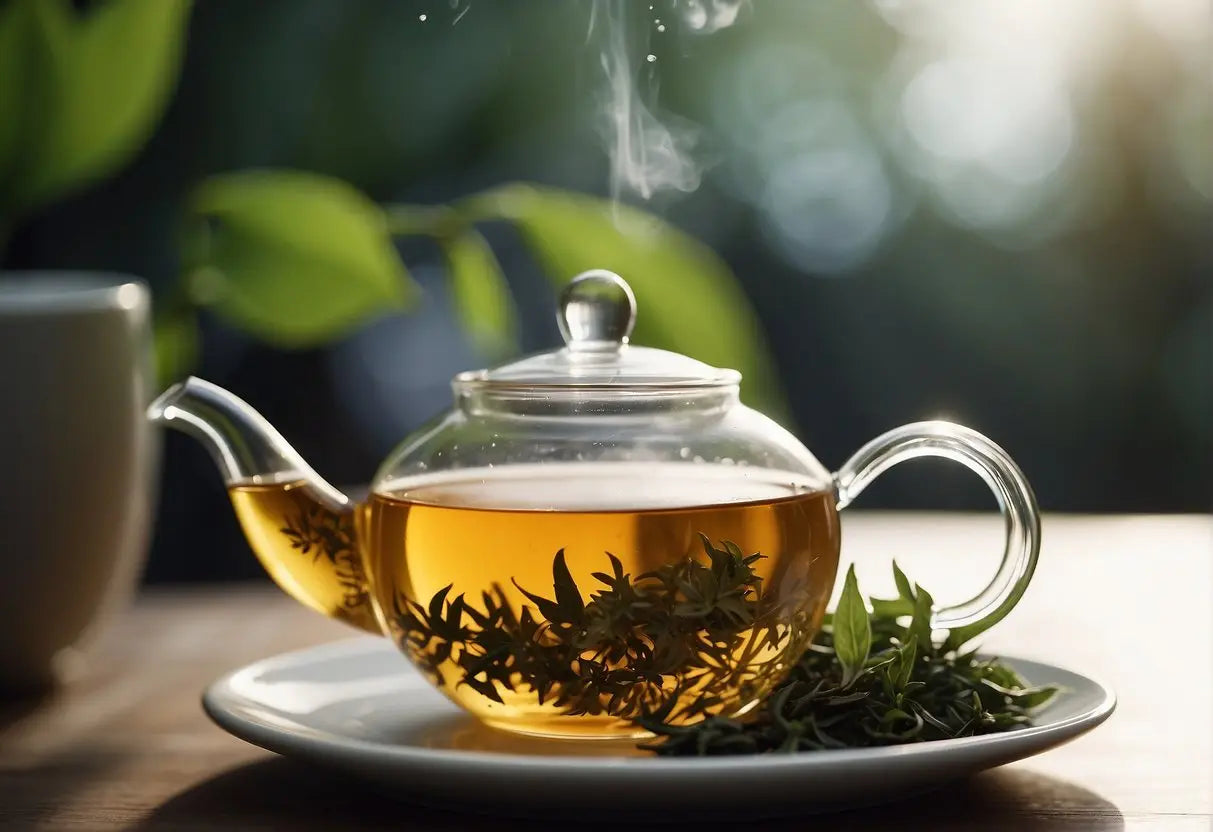How to Brew Loose Leaf Tea Without an Infuser
When brewing tea, loose leaf tea tends to offer a richer flavor and aroma compared to its bagged counterpart. The reason behind this is the quality of the leaf. Tea bags often contain smaller pieces of leaves or "fannings," which can result in a quick brew, but potentially a more bitter taste. In contrast, loose leaf tea is generally composed of larger, whole leaves, releasing their flavors more slowly for a more nuanced cup.
Here are essential points to understand about loose leaf tea:
- Varieties: Loose leaf tea comes in several types such as black, green, white, oolong, and herbal. Each has unique characteristics and flavor profiles.
- Quality: The larger the tea leaves, the more times you can steep them, often resulting in a more economical and flavorful option.
- Storage: To maintain freshness and flavor, store your loose leaf tea in an airtight container away from light, heat, and moisture.
Consider these elements when choosing your tea:
Bestsellers
| Element | Description |
|---|---|
| Leaf Size | Larger leaves often indicate a higher quality of tea. |
| Color | Rich, vibrant colors in the leaves can signal a more flavorful brew. |
| Aroma | Fresh, strong scents from the tea leaves suggest they’ve been well-preserved and are of good quality. |
Remember that when you brew loose leaf tea, you provide the leaves with adequate space to expand, ensuring a better infusion of their essential oils into the water, which contributes to an enhanced taste and experience.
Necessary Equipment

To brew loose leaf tea without an infuser, you'll need the right vessel and some alternative tools that you likely have at home.
Choosing the Right Vessel
Opt for a pot or cup made from glass or ceramic, as these materials will not interfere with the flavor of your tea. Ensure it is large enough to allow the leaves to expand and water to circulate, which is essential for proper infusion.
- Glass/Ceramic Pot: Best for larger quantities.
- Glass/Ceramic Cup: Ideal for single servings.
Selecting Alternative Tools
Using common kitchen equipment can be an effective way to strain tea leaves.
- Fine Mesh Strainer: Place it over your cup to catch the leaves after brewing.
- Cheesecloth: Wrap leaves inside and secure it to create a makeshift teabag.
- Fork/Spoon: To hold the cheesecloth or to remove larger leaves manually after steeping.
Preparation of Tea Leaves

Quality and quantity are pivotal in preparing loose leaf tea. Following precise measurements and proper rinsing can enhance your brewing experience.
Measuring the Leaves
- Single Serving: For a single cup (approximately 8 ounces), use about 1 to 1.5 teaspoons of loose leaf tea.
- Multiple Servings: If preparing a pot, use 1 teaspoon per cup, adding an extra teaspoon for the pot.
Note: Adjust the amount slightly depending on the type of tea and personal strength preference.
Rinsing the Leaves
- Pouring Technique: Briefly pour hot water over the leaves, then immediately discard the rinse water.
- Duration: Rinse the leaves for 5 to 10 seconds to remove any impurities and prime the leaves for steeping.
Rinsing is especially beneficial for certain types of tea, like pu-erh or oolong, enhancing their flavor profile.
Heating the Water
Proper water heating is crucial for the ideal extraction of flavors from loose leaf tea. The temperature and method of boiling can significantly affect the taste.
Determining the Correct Temperature
Each variety of tea requires a specific water temperature to ensure optimal flavor. Use the following guidelines:
- Black tea: 190-212°F (88-100°C)
- Green tea: 150-180°F (65-82°C)
- Oolong tea: 170-200°F (77-93°C)
- White tea: 160-185°F (71-85°C)
- Herbal tea: 212°F (100°C)
If you don't have a thermometer:
Lao Ban Zhang
- Boiling: For herbal and black teas, allow the water to reach a rolling boil.
- Steaming with Small Bubbles: Suitable for green and white teas.
- Steaming Vigorously: Ideal for oolong tea.
Boiling Water Without a Kettle
You can still boil water without a kettle:
- Microwave: Place water in a microwave-safe container. Heat for 1-2 minutes, depending on the quantity. Be cautious as not all containers are suitable, and water may heat unevenly.
- Stovetop: Use a pot with a lid. Cover to boil water quicker, typically within a few minutes.
Remember to pour the water carefully into your cup or teapot to avoid burns.
Steeping the Tea
Proper steeping is crucial for unlocking the full flavor profile of loose leaf tea. Here's how you can achieve a perfect steep without an infuser.
Timing the Steep
| Tea Type | Water Temperature | Steeping Time |
|---|---|---|
| White | 160-185°F | 4-5 minutes |
| Green | 175-185°F | 3 minutes |
| Oolong | 185-205°F | 3-5 minutes |
| Black | 205-212°F | 3-5 minutes |
| Herbal | 212°F | 5-7 minutes |
Begin by heating your water to the appropriate temperature for your selected tea. Once you've added the tea leaves to the pot, start a timer. Oversteeping can lead to bitterness, while understeeping can produce a weak flavor.
Observing the Leaves
As your tea steeps, watch the leaves. They should unfurl slowly and swirl gently in the hot water, which is a sign of quality leaves. For teas that expand significantly, such as green or white, ensure there's enough room in the pot for the leaves to move freely, as this affects the infusion's quality.
Separation Techniques
To effectively brew loose leaf tea without an infuser, utilize common kitchen tools for straining and practice precise pouring when decanting.
Straining with Common Kitchen Tools
- Fine Mesh Strainer: Place a fine mesh strainer over your cup or pot. After steeping, pour your tea through the strainer to catch leaves.
- Cheesecloth or Clean Cloth: Layer cheesecloth or a similar clean cloth over a bowl. Pour tea over the cloth, then gather the edges to remove leaves from the liquid.
Decanting the Brew
- Steady Pour: Tilt your brewing pot carefully, pouring slowly to allow leaves to settle at the bottom and prevent them from entering your cup.
- Natural Sedimentation: After brewing, wait for a short period to let the leaves settle at the bottom of the pot. Then decant the clear tea into your cup, stopping before the leaves begin to pour out.
Serving Suggestions
Once you have brewed loose leaf tea without an infuser, serving it properly enhances the drinking experience. Here's how to make the most of your freshly brewed tea with the right accompaniments and presentation.
Accompaniments
Your choice of accompaniments should complement the flavor profile of the tea you’ve brewed. For more aromatic teas like Earl Grey or Jasmine, consider pairing with:
- Biscuits: A simple butter biscuit can balance the floral notes.
- Cakes: Lemon drizzle or light sponge cakes do not overpower the tea's delicate flavors.
For stronger teas like Assam or pu-erh:
- Savory snacks: Consider cheese scones or mini quiches to match the robust taste.
- Dark Chocolate: A piece can bring out the depth in the tea’s flavor.
Presentation Tips
Presentation plays a crucial role in enhancing the tea experience. Follow these tips to serve your tea with elegance:
- Teaware: Use a transparent glass teapot or pitcher to show off the steeping tea's color.
- Cups: Serve in fine china or glass teacups to complement the visual appeal.
- Accessories: Include a strainer at the table so guests can pour their own tea and prevent leaves from getting into cups.
- Garnishes: Add a personal touch with garnishes like a sprig of mint or a slice of lemon on the saucer.
Cleanup and Tea Leaf Disposal

After enjoying your cup of tea brewed without an infuser, properly disposing of the loose leaves and cleaning up is straightforward. Here’s a quick guide to ensure that the process is as smooth as your freshly brewed tea.
Empty the Teapot
- Swirl and Pour Out: Swirl the remaining liquid in your teapot and pour it out. This helps in loosening the tea leaves.
- Remove the Leaves: Use a spoon to scoop out the leaves. If a few remain, rinse the pot with water to wash them out.
Tea Leaf Disposal
- Compost: If you compost, tea leaves are a great addition. They contribute to the nitrogen content of your compost.
- Garden: Tea leaves can also be scattered directly into your garden beds. They can help to deter pests and nourish the soil.
Cleaning the Teapot
- Rinse Well: Rinse your teapot with warm water to remove any lingering tea residue.
- Soap and Scrub: For a deeper clean, use a small amount of dish soap and a soft brush or cloth to gently clean the inside.
- Air Dry: Invert the teapot on a dish rack to allow it to air dry completely before the next use.
Remember: Avoid using abrasive scrubbers on your teapot as they can scratch and damage the surface. Regular cleaning will preserve the quality of your brewing vessel and ensure the true flavors of your tea are always enjoyed.
Cleaning the Cups
- Rinse with Hot Water: Immediately after use, rinse cups with hot water to prevent staining.
- Soapy Wash: For tougher stains, a drop of dish soap and a soft sponge should do the trick.
- Dry Properly: Using a towel or allowing the cups to air dry will prevent water spots and keep your cups ready for your next tea session.
Frequently Asked Questions
Brewing tea without an infuser can be simple with the right tools and techniques. This section addresses common questions and offers practical advice to enhance your tea-brewing experience.
What are some effective methods for straining loose leaf tea if you don't have a tea infuser?
For straining loose leaf tea without an infuser, you can use a fine mesh sieve or cheesecloth over a cup. Pour the brewed tea through the sieve or cloth to catch the leaves. Alternatively, you can use a regular fork to catch the leaves as you pour.
How do you measure the correct amount of loose leaf tea for one cup?
Generally, use about one teaspoon of loose leaf tea per six to eight ounces of water. Adjust this amount depending on your taste preference for a stronger or lighter brew.
Is it possible to put loose leaf tea directly into a cup of hot water?
Yes, you can put loose leaf tea directly in your mug. Steep it for the desired time, then strain the leaves out as you drink, or use one of the straining methods mentioned above.
Can you use a coffee maker to brew loose leaf tea, and if so, how?
You can use a drip coffee maker to brew loose leaf tea. Put the tea leaves in a coffee filter and run the machine as usual, but make sure to clean it thoroughly beforehand to avoid coffee flavors in your tea.
What are some DIY alternatives to a commercial tea strainer?
DIY alternatives include using a paper coffee filter, a piece of cotton fabric, or a small porous bag. Secure the tea inside and steep in hot water, then remove the makeshift strainer after brewing.
Is it safe to consume loose tea leaves that have not been strained out of the brew?
Yes, it's safe to consume the tea leaves left in the brew, although it may result in a stronger and potentially bitter flavor if they are over-steeped. Some people may not enjoy the texture of the leaves in their tea.
← Older post Newer post →











